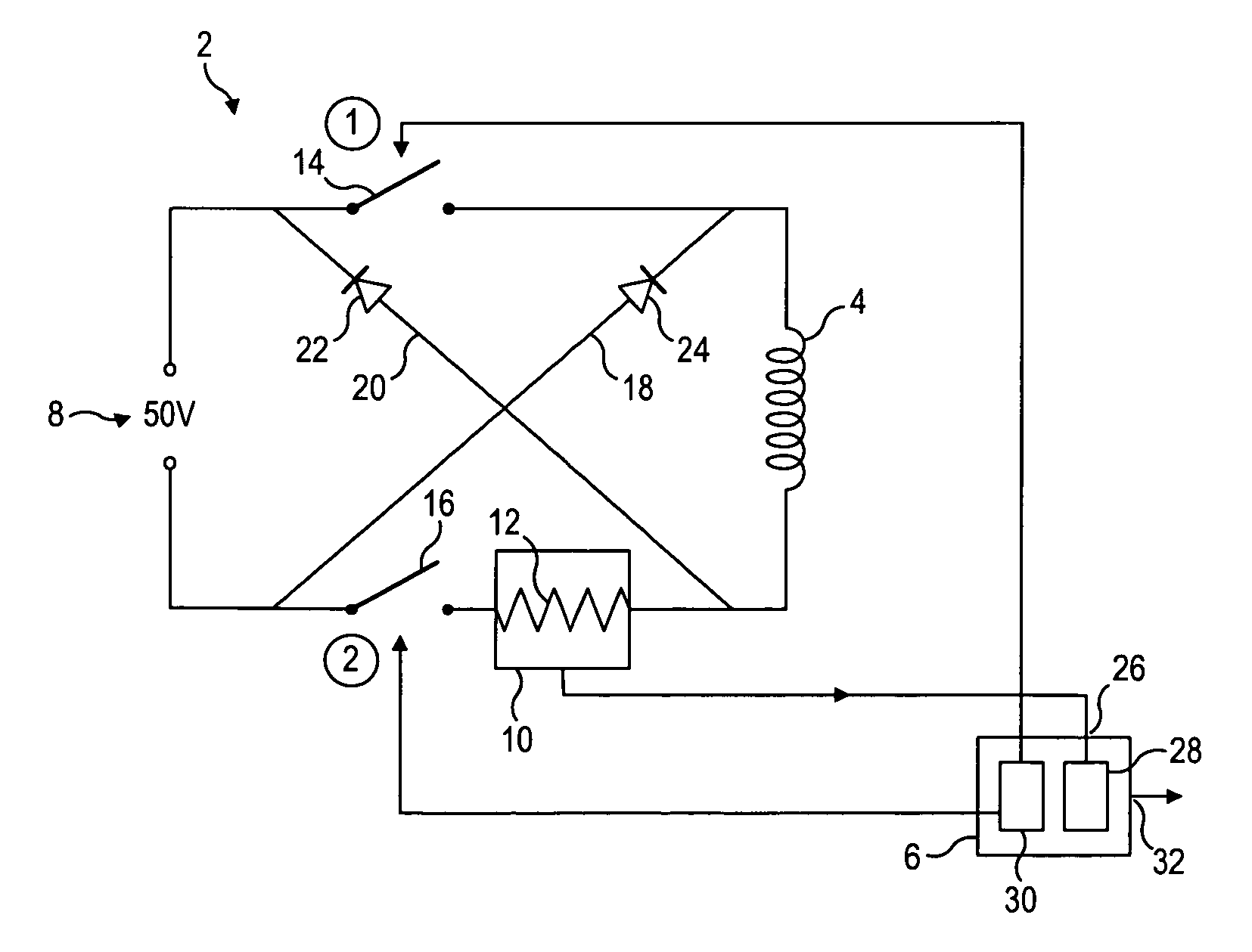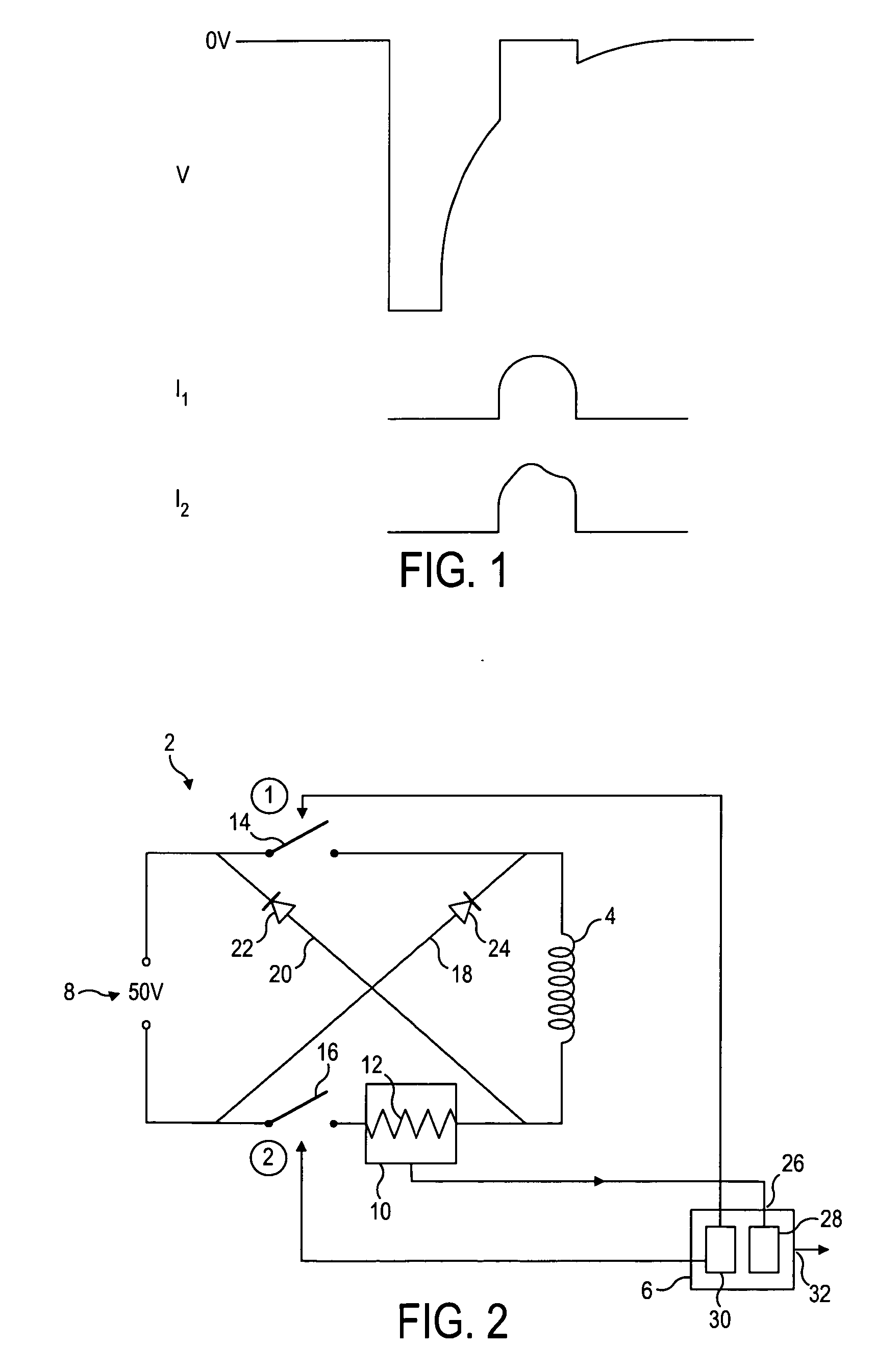Fault detector and method of detecting faults
- Summary
- Abstract
- Description
- Claims
- Application Information
AI Technical Summary
Benefits of technology
Problems solved by technology
Method used
Image
Examples
first embodiment
[0089]A sampling window and method of fault detection in accordance with the present invention is shown in FIG. 5. In this embodiment of the invention the sampling window is not fixed at a certain point in the combustion cycle of the engine but is instead capable of being swept in time between different cycles.
[0090]In FIG. 5, five different sampling window locations are depicted relating to a specific injection event (e.g. pre-injection, main injection or post injection) within subsequent injection cycles. It is also noted that the five sampling window locations are arranged to be progressively moved away from the end of the hold region in successive injection cycles. This is done in order to ensure that the first fault is detected and to mitigate against the possibility of a secondary fault (caused by valve bounce as described) above being misclassified as the primary fault.
[0091]The window 80 starts in an initial position (Position 1) that may be a fixed period of time after the ...
second embodiment
[0133]In the present invention an analysis technique for determining the presence of a discontinuity in the sampled current profile is disclosed.
[0134]It can be seen from FIGS. 4, 6-8 that the position of the maximum in the current profile moves with the sampling window 80 until a fault 112 is uncovered, at which point the current maximum remains fixed.
[0135]One method of analysis for determining the location of a fault is to record and plot the position (in time) of the current maximum. The location of a fault is determined by looking for “bunching” in the position of the current maximum, for example as the window is moved between successive positions (in different engine operating cycles) the temporal location of the current maximum is expected to change by a known amount. As the fault is approached the maximum will move relatively less (compared to readings taken before the sampling window reached the fault point) and so the measured current maximum positions will get closer to o...
PUM
 Login to View More
Login to View More Abstract
Description
Claims
Application Information
 Login to View More
Login to View More - R&D
- Intellectual Property
- Life Sciences
- Materials
- Tech Scout
- Unparalleled Data Quality
- Higher Quality Content
- 60% Fewer Hallucinations
Browse by: Latest US Patents, China's latest patents, Technical Efficacy Thesaurus, Application Domain, Technology Topic, Popular Technical Reports.
© 2025 PatSnap. All rights reserved.Legal|Privacy policy|Modern Slavery Act Transparency Statement|Sitemap|About US| Contact US: help@patsnap.com



